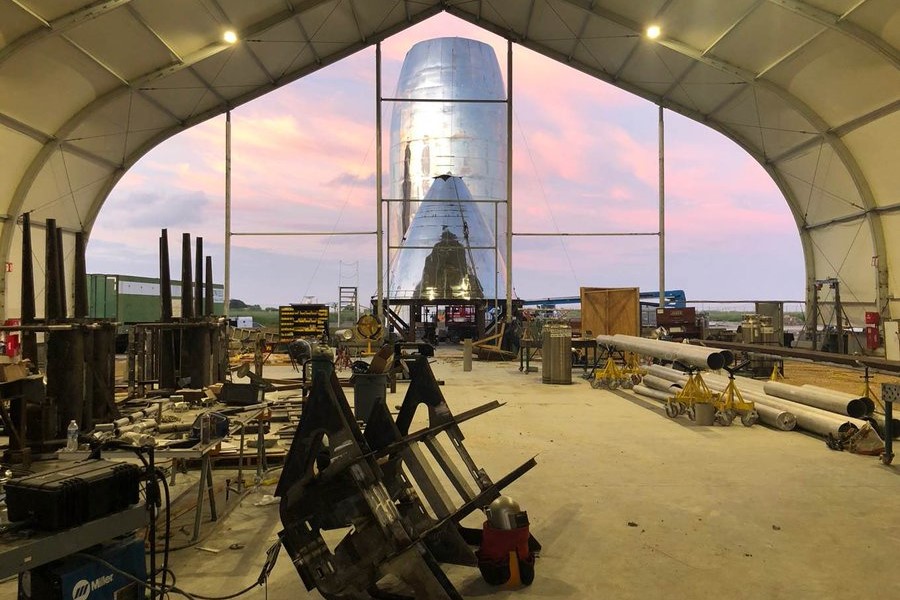SpaceX CEO Elon Musk is aiming to build a Starship rocket every 72 hours in the company’s new factory in Texas.
Ars Technica reported that Musk is gearing up for SpaceX to mass-produce more Starship rockets in the Boca Chica, Texas, factory by doubling the company’s workforce and having the factory operate at all hours of the day.
SpaceX hopes for Starship to be used as a commercial spacecraft that will be able to take off and land again, like an airplane. The aim is to have Starship ready for commercial flights by 2021. Musk has previously said that SpaceX hopes to land the Starship on the moon by next year, followed by a crewed mission a year or two later.
The Starship rocket is getting close to being ready to launch, reportedly in as little as a few months, but at first will only haul cargo. Once a launch is successful, Musk reportedly hopes to ramp up production of the rocket, reportedly starting out at making one per week and eventually working the way up to one every 72 hours. On top of that, Musk wants to keep costs to as low as $5 million for each rocket.
“Production is at least 1,000% harder than making one of something,” Musk told Ars Technica. “At least 1,000% harder.”

SpaceX revealed a prototype of the Starship rocket in September. The chromium-nickel stainless steel rocket stands 50 meters (164 feet tall) with a diameter of 9 meters (29.5 feet) and is powered by 37 engines.
It’s especially a tall order since the Starship rocket is made to be reused multiple times — the first such rocket of its kind. Musk’s ultimate goal for the rocket is to help set up a colony on Mars, bring people on a trip to the moon, and even be used for transcontinental travel.
“The conventional space paradigms do not apply to what we’re doing here. We’re trying to build a massive fleet to make Mars habitable, to make life multi-planetary. I think we need, probably, on the order of 1,000 ships, and each of those ships would have more payload than the Saturn V — and be reusable,” he added.



